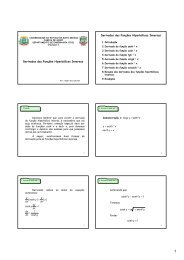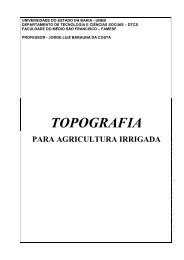Anuário Brasileiro do Arroz 2011 - Unemat
Anuário Brasileiro do Arroz 2011 - Unemat
Anuário Brasileiro do Arroz 2011 - Unemat
Create successful ePaper yourself
Turn your PDF publications into a flip-book with our unique Google optimized e-Paper software.
Experiments with<br />
organic blackbeans<br />
show similar<br />
field performance<br />
and higher market<br />
value compared<br />
to conventional<br />
plantings<br />
Compensating<br />
With the consumption of organic<br />
products on the rise in Brazil, this cultivation<br />
system turns out to be attractive<br />
to farmers. According to researcher<br />
Enderson Petrônio de Brito Ferreira, of<br />
Embrapa Rice and Beans, based in<br />
Santo Antônio de Goiás (GO), there is<br />
much added value in cereal produced<br />
organically, by virtue of scarce supply.<br />
While a 50-kg sack of conventionally<br />
produced black-beans rarely reaches<br />
R$ 80 (minimum price stipulated by<br />
the government), organic black-beans,<br />
grown without agrochemicals, frequently<br />
sell for upwards of R$ 100 a<br />
sack.<br />
Embrapa has been running trials<br />
with organic black-beans for at least<br />
eight years. The fields were established<br />
gradually, until reaching three crops.<br />
By analyzing the results achieved from<br />
the harvested grain, in each one of the<br />
phases, the researchers ascertained<br />
that the performance was much similar<br />
to commercial plantings, assessed<br />
through surveys conducted by the<br />
National Supply Company (Conab).<br />
According to Ferreira, the leguminous<br />
cereal cultivated in the first<br />
Embrapa crop, seeded in the second<br />
half of October, achieved productivity<br />
rates ranging from 1,500 and 2,500<br />
kilos per hectare. “This depends on<br />
the type of management, but in direct<br />
seeding the performance is superior<br />
compared to plowed and disked soil”,<br />
the researcher points out. At the beginning<br />
of the experiment, eight years<br />
ago, yield per hectare barely reached<br />
600 kilos. According to the Conab report,<br />
April <strong>2011</strong>, the national average<br />
in the first crop of the 2010/11 season,<br />
will remain at 1,169 kg/ha.<br />
For five years, Embrapa researchers<br />
have been planting winter crop blackbeans,<br />
always in the same area, with<br />
seeding in mid-February. According to<br />
Ferreira, the productivity rates have<br />
been low, reaching 800 kg/ha. “At this<br />
period, there is higher pest and disease<br />
incidence, besides scarce rainfall”, he<br />
justifies. In traditional plantings, according<br />
to official figures, average productivity<br />
is estimated at 750 kg/ha for<br />
the 2010/11 crop year.<br />
The third crop in the research institution’s<br />
experiments started in 2007,<br />
always seeded after mid-May. Ferreira<br />
explains that in this period the field of<br />
the organic crop is entirely conducted<br />
through conventional soil management<br />
practices, with plowing, disking<br />
and irrigation. Productivity is about<br />
2,000 kg/ha. In traditional cultivations,<br />
surveyed by Conab, the estimated<br />
average result for the 2010/11 crop<br />
year is 1,022 kg/ha.<br />
ADVANTAGES Embrapa Researcher<br />
Anderson Petrônio de Brito Ferreira<br />
has it that the major advantages<br />
derived from organic plantings include<br />
the elimination of any chance for agrochemical<br />
contamination, smaller environmental<br />
impact, rising population of<br />
natural enemies of pests and smaller<br />
incidence of diseases. One of the biggest<br />
hurdles in black-bean crops is<br />
disease management. The researcher<br />
maintains that there are no cultivars<br />
resistant to such scourges as white<br />
mold, caused by the fungus known as<br />
Sclerotinia sclerotiorum, and golden<br />
mosaic, whose vectors are Bemisia<br />
tabaci and B. argentifolli flies.<br />
Ferreira explains that to fight fungus<br />
diseases, biological controls can<br />
be used, which require the use of the<br />
fungus Metarhizium anisopliae. For<br />
Bacteria-induced diseases, the recommendation<br />
is the application of the<br />
Bordeaux or sulfur calcium mixtures.<br />
For the control of pests, researchers<br />
normally apply neem oil, an Indian<br />
plant with insecticide powers, besides<br />
caranja and pepper extract.<br />
107


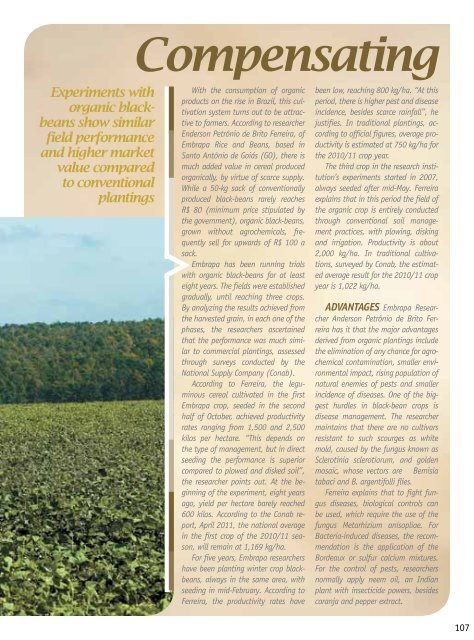
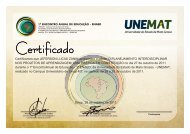
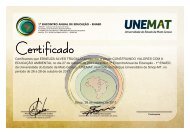
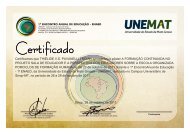
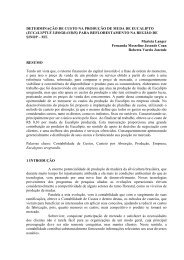
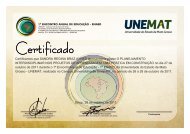
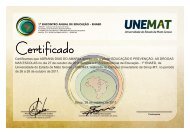
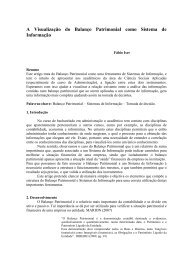
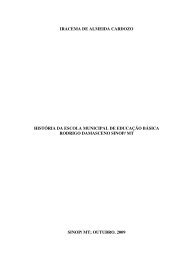

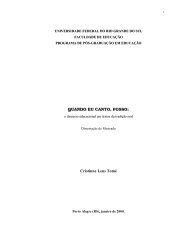
![Aula 31 - Funções Hiperbólicas [Modo de Compatibilidade] - Unemat](https://img.yumpu.com/14334654/1/184x260/aula-31-funcoes-hiperbolicas-modo-de-compatibilidade-unemat.jpg?quality=85)
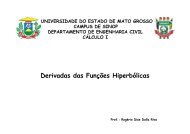
![Aula 31 - Funções Hiperbólicas [Modo de Compatibilidade] - Unemat](https://img.yumpu.com/14332146/1/190x135/aula-31-funcoes-hiperbolicas-modo-de-compatibilidade-unemat.jpg?quality=85)
